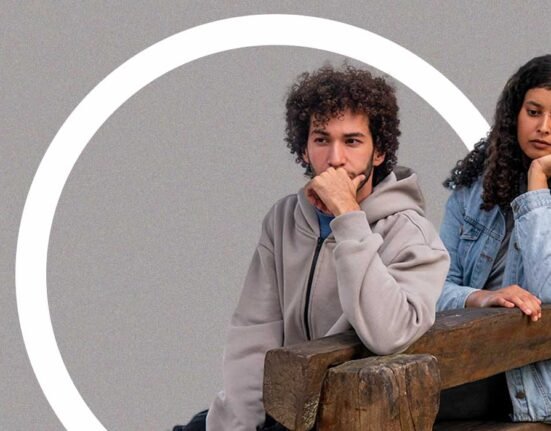Have you ever stepped into a room and sensed the floor tipping over, though you were aware it was flat? Or gazed at a picture, noticed something, blinked, and it transformed into something else altogether? This is the illusion of the Museum of Illusion, an interesting place where the fascinating world of optical illusions comes to life. These perceptual impacts forcefully disturb our perception of reality. This causes us to see stimuli in ways that are different from objective reality. These illusions are ingeniously crafted to exploit the built-in bias of human perception, cunningly leading us into processing visual information in a particular way.
The result is typically images that appear distorted, blurred, or fundamentally different from what exists. For instance, you can glance at a still image but your mind’s certain that it’s in motion, or view two things that are perfectly identical as vastly dissimilar sizes. This intriguing shuffle between what is sensed and what the brain constructs makes apparent the extremely detailed process of our thinking.
As various sources (DENYS A., 2024) have discussed, optical illusions are as varied as geometrical distortions in which lines seem to be bent but are actually straight, to ambiguous shapes like the famous duck-rabbit. All of these points point to the amazing facility with which our brains can be led astray by nothing more than contextual hints. This fascinating fusion of art and science not only captivates the audience but also encourages a deeper appreciation of the underlying mechanisms governing our everyday perceptual experience, literally making us see the world differently.
The Psychological Principles Behind Optical Illusions
Optical illusions give us profound insights into how our brains process visual information. It is largely comprised of pattern recognition, the mechanism we employ to identify shapes and colours, and depth perception, by which we can identify distance and observe three-dimensional forms even from two-dimensional representations.
1. Depth Perception and Pattern Recognition
A classic example is the famous Ames Room illusion. It cleverly plays tricks on depth cues to drastically alter our size perception, eloquently demonstrating our strong dependence on visual context. Seeing a friend shrink or grow up in the room makes one laugh while also being slightly disconcerting. This shows the brain striving to keep perceptions consistent in the face of conflicting information.
2. The Role of Expectation and Top-Down Processing
Our expectations shape perception in important ways through “top-down processing,” in which experience. Prior knowledge modulates our interpretation of visual input. Museums of Illusion tend to include illusions such as the Kanizsa Triangle, in which the brain is fooled into completing gaps and perceiving shapes that are not objectively there, based on familiar patterns (Pageon.Ai, 2025). Visitors will normally state that preconceptions influence what they really perceive in uncertain images or motion illusions, as if the brain were consciously inventing things, even when this involves inventing details.
3. Visual Ambiguity and Cognitive Dissonance
Vision ambiguity is a key ingredient in constructing cognitive dissonance—a sense of discomfort from conflicting thoughts or beliefs. Optical illusions do this best, usually being the quintessential examples of such ambiguities. Consider, for example, the Rubin vase, which is perceived either as a vase or as two faces depending on where one focuses. The internal challenge presented by these conflicting positions amazes visitors and increases their understanding of the complexities of human thinking, making such displays not merely tricks but richer insights into mind functioning.
The Neuroscience Behind Perception and Reality Construction
Optical illusions directly influence complex neural processes that are closely linked to the brain’s remarkable ability to construct perception. The visual information process begins when light strikes the retina at the back of the eye, converting to electrical impulses that travel to the visual cortex, the central processing site for visual information in the brain. It is there that “bottom-up processing” commences, analysing unprocessed sensory data like rudimentary lines, colours, and edges. The brain then injects previously learned knowledge and context with “top-down processing.” Optical illusions skillfully exploit both of these processes.
1. Contextual Influence on Perception
A classic example is the Checker Shadow illusion, where two squares of the same colour appear radially different due to the context supplied by surrounding shadows. One of the best demonstrations of how context strongly influences what we perceive as “reality” (Pageon.Ai, 2025). The first experience of this illusion often causes incredulity until contextual factors are ruled out and the plain truth becomes clear. In addition, geometric-optical illusion studies indicate that different shapes cause different neural activation of the brain (Nemati, 2017), suggesting collaboration between different brain regions to construct the coherent perceptions we see every day.
2. Dynamics of Motion Perception
Motion perception, in short, exemplified by the Rotating Snakes Illusion, demonstrates another fascinating property of neural processing. Though unmoving, the brain can perceive movement through subtle colour differences and tiny, involuntary eye movements called microsaccades (Pageon.Ai, 2025). The brain stitches these tiny movements together into a smooth perception of motion. These illusions emphasise the intricate interaction between low-level visual input and high-level neural processes, both the marvellous sophistication and inherent constraints of our mental processes. Exploration of these phenomena not only inspires wonder. But it can enhance human perception and aid in the detection of neurological disorders associated with visual processing.
The Interactivity Role in Engaging with Illusions
The Museum of Illusion effectively engages the visitors through its interactive displays, which beautifully harness curiosity and play—the building blocks of excellent experience design. Exploring over 70 displays evokes a wonderful sense of awe, compelling the visitors to think critically about their experiences. As per an interactive museum review (The best interactive museums in NYC, 2025), this sensory experience encourages an environment in which enjoyment truly enhances learning, transforming the experience from passive observation to an active discovery process.
By manipulating illusions—either through shifting the point of view or through messing around with light—guests obtain in-depth knowledge of how their own brains interpret visual data, essentially a hands-on neuroscience lesson. A good example of this kind is the interactive colour-change card trick (DENYS A., 2024). It perfectly demonstrates how easily visual signals mislead the senses: one moment, a card is green, the next, a card with an unmistakable blue colour, leaving the spectator to question their initial impression. This interactivity, sensory interaction challenges the visitors to believe their senses while simultaneously challenging their validity, posing an interesting paradox.
Active participation shows that they do not just entertain but prompt serious reflection upon the mechanisms of our perceptual system. Real-time interaction provides immediate feedback regarding cognitive bias and the psychology behind human perception. This delightful blend of curiosity-driven discovery and playful fun is a rich learning environment in which entertainment and education elegantly meet, resulting in a more intimate, deeper understanding of the science of optical illusions. It transcends mere “looking” to become an experience of “experiencing” and “discovering.”
Creating Enjoyable Confusion: The Museum Experience
The Museum of Illusion boldly challenges its visitors to reconsider their perceptions and even their knowledge of reality. In a charming series of optical illusions, participants engage with installations that are as profoundly entertaining as they are mentally stimulating, leaving them to consider further how the mind itself creates experiences. This incisive blend of mind challenge and entertainment allows players to investigate the nuances of seeing in an entertaining maze of controlled confusion—a confusion that provokes the mind while bringing smiles.
These interactive exhibits promote experiential learning, with visitors able to touch and rearrange image constituents and literally observe for themselves how context creates a gigantic impact on perception. Not theory in practice; it occurs right before their own eyes. The majority of visitors, according to visitor feedback (http://www.degordian.com & Degordian, 2025), inform us that this interactivity genuinely enhances their experience, providing them with actual insights into the engineering of the illusions and creating very memorable moments perfect for sharing. Who would not wish to pose for a photograph where they appear to be giant-sized or defy gravity?
These experiences lead to a critical questioning of the certainty of our knowledge of reality. They show how easily well-designed deceptions can fool our brains, prompting reflection on how much our reality is actively constructed rather than simply observed—a humbling thought. The exhibits in the museum depict so well the principles of psychology, as explained by Pageon.Ai (2025), the mechanisms through which our brain is continually filling gaps to construct meaningful narratives from fractured cues. The brain is indeed a master storyteller.
Conclusion
Optical illusions provide us with an engaging and profound insight into human perception. They beautifully reveal that our brains are not passive observers but active constructors and interpreters of experience from frequently meagre information. This constant, changing interaction reveals the deeply subjective quality of our own experiences, with miscommunications that basically question our own understanding of “reality.” It causes us to think and pause. Perception is not merely influenced by biological mechanisms. Sophisticated cognitive constructs, in which context and experience play a crucial role, also deeply shape perception. With every trickery by an illusion. Our brain’s remarkable cleverness—and its inevitable blind spots—invite us to marvel.
FAQs
1. Why do optical illusions trick our brains so easily?
Because our brains rely on patterns, context, and past experiences to interpret what we see, illusions disrupt these expectations, leading to misinterpretation.
2. What psychological concepts are behind the illusions at the Museum of Illusion?
They include pattern recognition, depth perception, cognitive dissonance, top-down processing, and visual ambiguity.
3. Is what we see ever really objective?
No. Perception is subjective and influenced by context, past experiences, and brain assumptions, which can all distort what we think we see.
4. How do interactive exhibits enhance the illusion experience?
They allow visitors to manipulate visuals directly, making the perceptual shifts more personal, engaging, and easier to understand.
5. What can illusions teach us about how our brains work?
They reveal that the brain actively constructs reality, using limited input. Assumptions to fill in gaps, which can sometimes lead to errors in perception
References +
Denys A. (2024). The Wonders of Optical Illusions: How They Trick Your Mind. https://psychotricks.com/optical-illusions/
How the Mind is Fooled by Optical Illusions. (2025). https://www.pageon.ai/blog/best-optical-illusions
Farshad Nemati. (2017). Top-down Approach to the Investigation of the Neural Basis of Geometric-optical Illusions: Understanding the Brain as a Theoretical Entity. https://brieflands.com/articles/ans-14608
Degordian (http://www.degordian.com), Degordian. (2025). Museum of Illusions Boston. https://moiboston.com/
Cognitive dissonance – Wikipedia. (2025). https://en.wikipedia.org/wiki/Cognitive_dissonance
The best interactive museums in NYC. (2025). https://www.timeout.com/newyork/museums/best-interactive-museums-cultural-center













Leave feedback about this